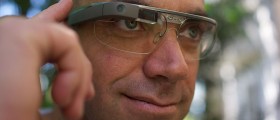Curious questions:
1. Does prostate grow back from HOLEP? How much - how long did it take?
2. Who here has the longest run (years) with HOLEP performed and problems still solved?
3. Anyone had HOLEP done with Moses 2.0 machine?
Loading...
I can provide some general information about your questions, but please keep in mind that medical experiences can vary widely among individuals.
-
Prostate Growth After HOLEP (Holmium Laser Enucleation of the Prostate):
- HOLEP is a surgical procedure used to treat benign prostatic hyperplasia (BPH), which is the non-cancerous enlargement of the prostate gland. It involves the removal of excess prostate tissue to relieve urinary symptoms.
- In general, the goal of HOLEP is to provide long-lasting relief from BPH symptoms. The procedure significantly reduces the size of the prostate, and for many patients, it can provide symptom relief for years.
- While some prostate tissue may continue to grow over time due to the natural aging process and hormonal changes, HOLEP is typically effective in addressing the symptoms associated with BPH.
-
Long-Term Success with HOLEP:
- The long-term success of HOLEP can vary among individuals. Many patients experience significant symptom relief and improved urinary function after the procedure.
- HOLEP has been shown to have durable results, and its benefits can last for several years. However, individual experiences may differ based on factors like the severity of BPH, the patient's overall health, and the presence of any underlying medical conditions.
- It's essential for patients to follow up with their urologist for regular check-ups and evaluations to monitor their prostate health and address any potential issues that may arise over time.
-
HOLEP with Moses 2.0 Machine:
- The Moses 2.0 laser technology is a newer advancement in laser surgery for urological procedures, including HOLEP.
- The Moses 2.0 system is designed to provide improved precision and efficiency during laser surgeries, potentially resulting in shorter procedure times and reduced complications.
- Patients who undergo HOLEP with the Moses 2.0 machine may benefit from these technological advancements, but the success of the procedure still depends on factors such as the patient's condition, the surgeon's skill, and post-operative care.
- The choice of surgical equipment and technology may vary among urologists and medical facilities.
If you are considering HOLEP or have questions about the procedure and the technology used, it's important to consult with a urologist who can provide you with personalized information, discuss your specific case, and address any concerns you may have.
Loading...
















